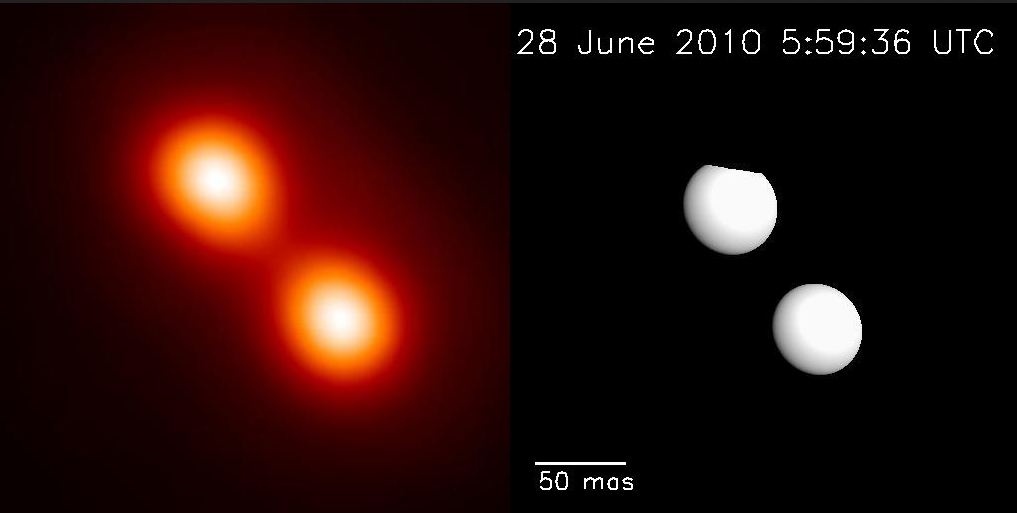Direct imaging
Direct imaging techniques are related to measurements by large ground or space telescopes or by using data from interplanetary mission. The targets are spatially resolved in the obtained images. Size and shape information can be extracted directly.
Direct, accurate measurements of asteroid physical properties are now possible for the largest several hundreds asteroids, which can be spatially resolved using the Hubble Space Telescope (HST) or large ground-based telescopes equipped with adaptive optics (AO). Using AO systems on the world’s largest telescopes (Keck, VLT, and Gemini), the size, shape, and pole orientation of asteroids can be determined. The AO system is today capable of providing images close to the diffraction limit of the telescope at shorter wavelengths (<1.6 μm), hence with an angular resolution of 33 milli-arcsecond (mas). Combining this technique with lightcurve inversion modelling it is possible to derive the volume-equivalent diameters for asteroids with typical uncertainties lower than 10%, caused by both the uncertainty in the size of the AO contour and the convex shape model imperfections. It can also remove the inherent mirror pole ambiguity of lightcurve inversion models. AO technique is also capable of discovering binary systems – an invaluable objects for studies on internal structure and composition through density determinations, because for single objects necessary information about their mass is usually unavailable.

Left panel: AO images of (90) Antiope, a binary system, approximated here with two ellipsoidal components with an average diameter of 91 km and 86 km, orbiting at ~171 km around their center of mass in 16.5 h. Right panel: (45) Eugenia is a system that was observed with Keck AO. This is a triple asteroid system, made of a large 217 km ellipsoidal primary and two 5 & 7 km satellites orbiting at ~600 and ~1200 km. Figure adapted from Descamps et al. (2007)
